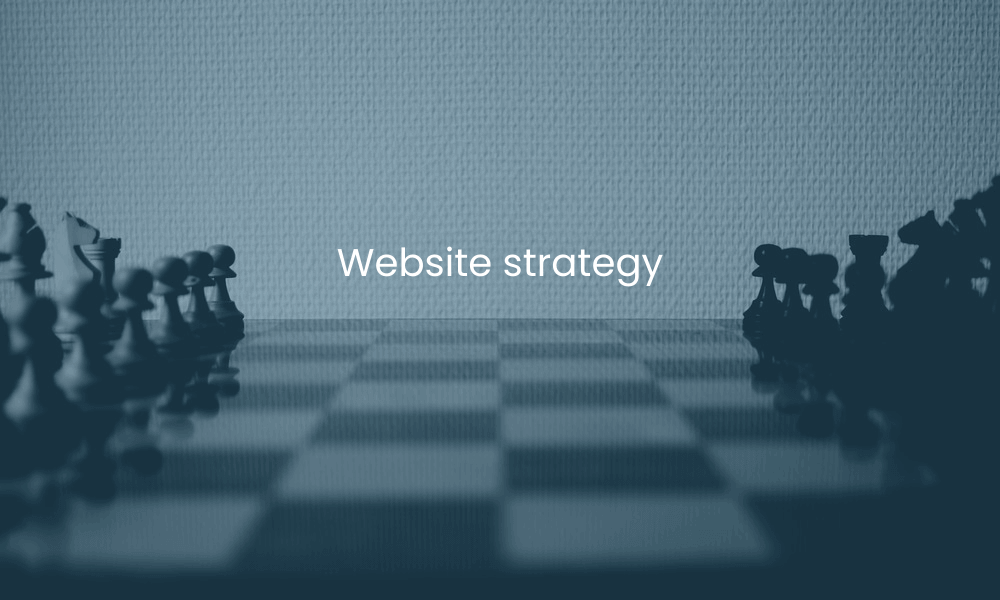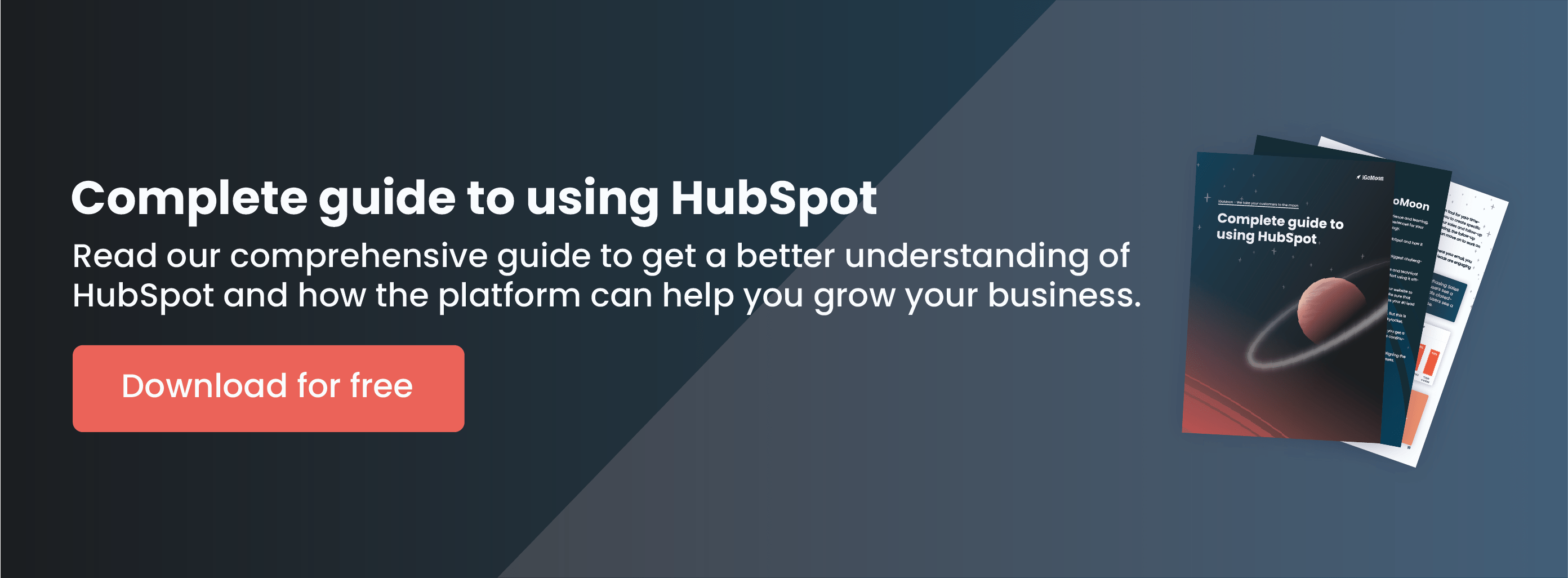Over time, the concept of website strategy has evolved tremendously. It used to be a secondary concern for most website owners, but it's now critical to your company's development and marketing success. Without a well-planned strategy, the outcome might be surprising. Investing time in strategy will allow you to create a website that is not just attractive and functional, but also encourages connections and building relationships with your visitors. This article outlines the activities you'll need to take to create and implement an effective long-term website strategy.

*This post was originally written by Marina Karlsson and published on 13 April 2022
We must admit that web design experienced some process-related changes lately. The fact is that traditional web design is gradually disappearing due to its inefficiency. First, the traditional approach uses a waterfall model in working with the project which reduces the flexibility and leads to the large upfront cost, and the amount of dedicated time, energy, and resources. Second, the traditional web design process usually does not include regular significant improvements after launch.
Fortunately, the traditional approach has given way to a modern Growth-Driven Design methodology invented by Luke Summerfield. It focuses on three stages: strategy, launch pad, and continuous improvement of the website.
Website strategy is the first and the most important stage in building websites because it will form the foundation for what you’re going to create. The main purpose of the website strategy is to understand your internal and external audiences, as well as how the website may assist them in solving problems. Your website strategy should include seven important steps:
- Set SMART goals
- Identify your audience's needs
- Develop Buyer Personas
- Define fundamental assumptions
- Map customer journey
- Develop a website-specific strategy
- Brainstorm a wishlist
Now let’s take a closer look at each of them.
Set SMART goals
Have you already answered the question: why are you building a website and how it will help customers and your teams to reach their own goals? Your website is the primary tool for business growth, so it must be aligned with business goals and metrics. Include all stakeholders in the process of determining what their objectives are and how the website may support them in achieving them.
The fact is, that goal setting drives success - without goals, there’s no opportunity to measure it. Your goals need to be SMART meaning: specific, measurable, achievable, relevant, and time-bound.
Growth-Driven Design has a conceptual framework for goal setting that covers eight important areas or steps, which flow from one another. By setting goals in this scenario, you will definitely not miss the connection between the company's goals and actual results. This may sound complicated, but we will now help you figure it out.
- A mission is a statement that explains why an organization exists, what its overarching aim is, and what its operational goals are. So the mission for your website should align with the overall mission of your company.
- The strategy should cover the current year. Keep it short, just a couple of sentences to summarize what needs to be done to get closer to your mission. But aligned with a website of course.
- Plays represent the focus area for each part of the strategy. They briefly outline who, what, where, and when they are supposed to do in order to accomplish this area.
- Key Performance Indicators (KPIs) will help you to track metrics to understand the impact. The KPIs you select should be a direct reflection of the influence you're having on the business as a result of your chosen plays and focus areas.
- Target goals ensure that everyone is working towards the same thing. They’re based on the KPI's performance. By the end of the year, each of these target goals should be reached.
- Stretch goals are ambitious and it's unlikely that your team will reach more than 70% by the end of the year. But this is okay! Stretch goals help to get better results during brainstorming, reporting, and other discussions with the team.
- Actual results document your progress. That helps your team to control if you're on track to hitting yearly goals.
- Omissions represent ideas that you want to realize but not now, so not to have them as distractions. They are supposed to be denounced in words and fixed in this section.
Create a single document that outlines all of these goal-setting procedures. Remember to come back to this paper at the halfway point of each year.
Now that you have a clear idea of the goals you want to achieve and the plays that will get you there it's time to get all stakeholders and departments on board. Using this document will help in creating the right expectations when you begin to execute each of the plays.
We're here to help you discover areas of untapped potential. Book a discovery workshop with our crew today and we'll help you to set goals.
Identify your audience's needs
Marketers sometimes think so much about their Buying Personas that they forget the purpose of their product. Why does your customer need it? To answer this question, we suggest you use a framework called Jobs-to-be-Done or shortly JBTD. It was developed by Anthony W. Ulwick and aims to explain what motivates people to buy any product or service. The purpose of the Jobs-to-be-Done concept is to figure out what your customers are striving to do.
To put it another way, your customer is someone who "hires" your product to do a certain activity, or "job". Your product must help to complete the assignment, deliver the desired result, and support the individual in moving forward.
Pro tip: use the following simple hint phrase to create a job story: As (who), when I am (the situation that person finds themselves in), I want to (the action) so I can (the desired outcome).
The process of determining JTBD reminds us of the process of creating Buyer Personas which we'll talk about later: start with research and interviews with your audience. It will help you to understand the motivation of people and look at it from another angle. Maybe there are many different ways to get this job done?
Considering your current knowledge of your market, business, and website is part of this process. It can clarify the causal motive behind a purchase and can change your understanding of customer preferences.
Develop Buyer Personas
When you know what's the real purpose (should we say the "job"?) of your product or service it becomes easier to determine specific characteristics of your audience and create Buyer Personas. Most likely, you already have some. But now it's time to take a fresh look at them. It's critical to examine your website from the perspective of an ideal customer. Buyer Personas also help your team communicate in a consistent and uniform language, making it clear who you're building the website for.
 (Image: Pexels)
(Image: Pexels)
To create a Buyer Persona, attempt to incorporate as much information as possible, such as your own thoughts, internal and external surveys, and interviews. First, speak with your coworkers, they will certainly have the knowledge to give. Every member of the team that interacts with customers has their own point of view. It's critical to understand the customer's objectives, background, and comments on interactions with your current website. Make your own assumptions, which you may subsequently test with your visitors. You should speak with them, as well as someone who has never purchased from you before. Give them a questionnaire to see what they're looking for, how they're looking for it, and what their pains and gains are.
Related article: Your guide for creating a powerful Buyer Persona
Make a thorough UX research. Consider how a Persona may find your website, what information might catch their eye, what kind of content should be included, where navigation should be placed, and so on. Interviewing clients who have recently migrated to and left you may also help you answer questions regarding Jobs to Be Done and fundamental assumptions in other website strategy processes.
Once you've made your Buyer Personas, integrate them into everything you do to positively affect your website.
Pro tip: when building and redesigning a website, use only the primary Personas, otherwise, you risk getting bogged down in details and losing focus.
Isn't this process simple and enjoyable? Now it's time to tackle the most difficult task: defining core assumptions.
Define fundamental assumptions
Why is it that fundamental assumptions are such a difficult part of the process? Because you must synthesize all you've gathered and examined so far and condense it into a few clear and concise phrases. The fundamental assumptions are exactly what they sound like: the bedrock or heart of both your company and your website. But, because they haven't been proven, we can only assume.
It's critical to follow a certain procedure at this point. Start by outlining the "job" that needs to be done with your product, as well as the expected progress and goal that individuals are attempting to achieve.
Take a careful look at these people's characteristics. Then figure out what problems they're facing and try to remedy them using solutions provided by your company.
Then, explain what prompted them to consider “employing” your product or service, as well as the distinct value they would obtain only by working with you and what sets you apart from your competitors.
Thus, at the output, you'll have a description of the problem, solution, push situation, Unique Value Proposition, and identified existing alternatives.
Following that, you must link all of these assumptions to the website.
Map customer journey
Knowing Personas and why they need your product, can proceed teams to the step of building a Buyer's Journey. The main stages are Awareness, Consideration, and Decision.
Actually, the customer journey begins with the customer's needs much earlier than the purchase and ends much later. The choice of message for each part of the customer journey is the most important.
The awareness stage is when buyers become aware of their problems. In the consideration stage, they now define their problem and look for the solution. At the decision, stage customers decide on specific solutions among chosen alternatives.
Related article: How to create a successful Buyer's Journey
Customers are looking for varying information in different stages of communication with companies. They interact as long as it's relevant and value-creating.
The general scheme for Customer Journey Map (CJM) development is based on determining for which product and target group the map is built, describing the selection process, decision-making, purchases, post-purchase relationships, and interaction points. In the process, you should consider traffic sources, external and internal points of contact, as well as what conscious or unconscious questions arise with customers in each stage.
If you sketch out your Persona's path, you'll have a better understanding of how to connect your website to their lives and solve their concerns. The systematization of all contact points makes it possible to decide at what stages and how the website should remove users' doubts and stimulate them to take an action.
Develop a website-specific strategy
Up to this point in your strategy development process, you've focused on the core elements. Now it’s time to apply all the gained knowledge directly to the website. Here is a list of activities that you need to pay attention to when working on a website-specific strategy:
- Conduct a detailed audit of an existing website. You need to determine what works and what doesn't.
- Analysis of the offer of direct competitors. This will help in the development of unique features that competitors do not have.
- Analysis of all points in fundamental assumptions to understand how each detail will solve the user's problem.
- Creating user flows - this is the user's path on the website that you'd like them to go through to achieve the desired result.
- Development of site architecture.
Pro tip: At the last step in the website strategy - a brainstorming session - you should reevaluate the user flows, website architecture, and design according to new ideas that can come up.
- Development of an SEO strategy in terms of keywords and moving from an old website without loss of SEO.
- Creating branding and visual components.
Don’t have a brand board? Contact us so we can help your brand to find a new face and mood
- Description of the technical side: necessary and desirable integrations.
Now we’ve arrived at the last step of the website strategy - brainstorming the initial wishlist.
Brainstorm a wishlist
A wishlist represents all ideas that you want to implement on your website. Of course, you should create a list aligned with all previous steps. That’s why we finish with brainstorming, but we hope that all stakeholders have started this process long ago at the first step and now they are ready to share their thoughts and creativity.
Now all ideas will be more structured and easier to navigate because it’s clear what issues the website will answer, how it will help your users, you know the architecture and brand board is in front of everyone. So you can start a collective brainstorming.
Here are some tips on how to organize a successful brainstorming session:
- Ask each member of the team including stakeholders to make an individual review of the ideas they were working on since the project started.
- Book a time. Since such a session may take several hours, agree on the time in advance.
- Organize a nice inspiring atmosphere, have a lead in the process, and set an agenda.
- Start with reviewing the previous materials: goals, assumptions, persona, and customer journey map.
- Let everyone present individually their ideas with a short explanation but without discussing them.
- Start a deep collaborative discussion with questions, feedback, and deep understanding.
- Wrap up the discussion and form a final sheet.
- Make sure that all website components are included from site elements, pages, particular features, or modules to all integrations and technical needs.
- Decide now altogether about the priority of all ideas. It will help with further structure during the next stage of building the website and what should be done right away and what can wait until the website is launched.
At the end of the process, you should have up to 200 different ideas for your website. These ideas will form the basis of your launch pad, but you’ll also work on them in the process of continuous improvement. This wishlist can be improved with time so you don’t need to strive to do it as an end version. Allow your lead to study the strategy documents and ideas offered, and rank all ideas for the user and the business from high to low effect.
So, a wishlist was the last step of your strategy.
Building a website is a huge undertaking, but if done well it can be a game-changer for your business. Remember website redesign doesn't have to be a fleeting decision. It should be a marketing activity that uses your data and goals to move your business in the right direction! As stronger and more detailed your strategy is easier to create and launch your offspring. And also remember that on any step of your website strategy the keyword is “focus”.
When you're ready with your strategy you can move to the next stage - the launch pad.
Download our free guide to learn more about what you can do with HubSpot in regards to your website, as well as other parts of your business.

